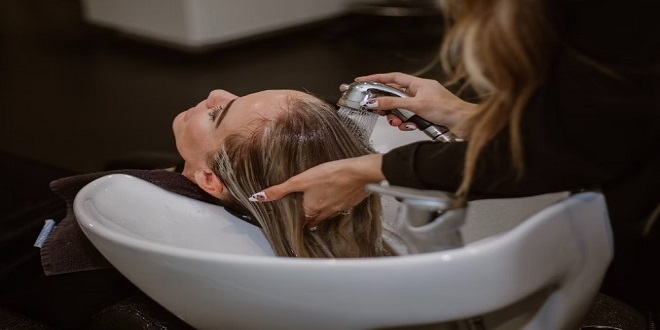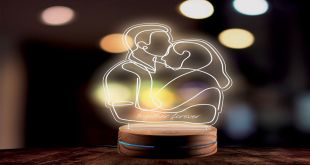Beauty routines are often an important part of a woman’s daily life, but could some of these routines pose a severe threat to their health? Chemical hair straighteners, a popular product many women use, have been linked to a higher risk of developing uterine cancer, breast cancer, and other hormone-related cancers.
As a result, many women have filed lawsuits against the manufacturers of these products. In this article, we will explore the hidden dangers of chemical hair straighteners, the link between these products and uterine cancer, and the lawsuits that have been filed in response to this connection.
It’s important to stay informed about the potential risks associated with our beauty products and take action to protect our health and well-being.
So, let’s get started!
Understanding the Link between Chemical Hair Straighteners and Uterine Cancer
According to a National Institute of Environmental Health Sciences (NIEHS) study, women who use chemical hair straightening treatments are more likely to develop breast cancer, uterine cancer, and other malignancies linked to hormones.
The 33,497 U.S. women in the 11-year study—mostly African American—were between the ages of 35 and 74. Researchers discovered that using hair straightening products increased breast cancer risk considerably when compared to not using them. Over the course of the 11-year period, 378 new cases of uterine cancer were identified.
According to the study, women who used these items every five to eight weeks had a 30% higher risk of developing uterine cancer than those who did not use them.
The link between chemical hair straighteners and uterine cancer is thought to be related to the chemicals in these products disrupting hormone function in the body. Formaldehyde and other chemicals in hair straightening products can act as endocrine disruptors, interfering with the body’s natural hormonal balance. This disruption has been linked to an increased risk of hormone-related cancers, including uterine cancer.
The Chemicals in Hair Straighteners: How They Affect the Body
Chemical hair straighteners contain a variety of chemicals that are known to have potential health risks. Some of the most commonly used chemicals in these products include:
Formaldehyde
A preservative found in hair straightening products, formaldehyde is a colorless, pungent gas. It is a recognized carcinogen that can lead to cancer, respiratory issues, eye and skin irritation, and other health issues. Leukemia and nasopharyngeal cancer have both been linked to prolonged exposure to formaldehyde, according to the National Cancer Institute.
Thioglycolates
Thioglycolates are chemicals that weaken the protein connections in hair to make it simpler to straighten. They are utilized in hair straightening products. However, they can also cause chemical burns, hair breakage, and scalp damage. According to the National Institutes of Health (NIH), thioglycolates can cause severe skin and eye irritation and should be used with caution.
Sodium Hydroxide
Sodium hydroxide, also known as lye, is a strong chemical used in hair straightening products to break down the protein bonds in the hair. It can cause chemical burns, hair breakage, and scalp damage.
Phthalates
Phthalates are endocrine-disrupting chemicals used in hair straightening products to help the product adhere to the hair. They have been linked to reproductive and developmental issues and can affect hormone levels in the body.
Overview of Uterine Cancer Lawsuits Related to Chemical Hair Straighteners
The incidence of uterine cancer lawsuits involving the usage of chemical hair straighteners has significantly increased during the last several years. The lawsuits allege that manufacturers of these products knew or should have known about the potential risks associated with their products but failed to adequately warn consumers.
The most recent in the list of lawsuits is the one filed against L’Oréal by Mitchell, a 32-year-old Missouri resident, who claims to have been diagnosed with Uterine cancer as a result of prolonged exposure to endocrine disrupting chemicals found in the brand’s hair care products.
The American Cancer Society estimates that 66,200 new cases of uterine cancer will be detected in 2023; 13,030 of those cases will be fatal. While not all of these cases are related to the use of chemical hair straighteners, the growing number of lawsuits poses a cause for concern.
If you have been diagnosed with uterine cancer or other hormone-related cancers after using chemical hair straighteners, contacting a reputable law firm can be a good first step toward seeking justice and compensation by filing a Chemical Hair Straightener Uterine Cancer Lawsuit.
Law firms like TorHoerman Law, LLC have been handling cases related to dangerous products. Additionally, they offer a free case evaluation to help individuals understand their legal options and determine whether they may have a viable claim.
Alternatives to Chemical Hair Straighteners: Embracing Natural Hair
As the potential health risks associated with chemical hair straighteners become more widely known, many women are turning to natural hair care alternatives. One popular alternative is embracing natural hair texture.
This involves avoiding chemical treatments altogether and allowing hair to grow and be styled in its natural state. By doing this, women can both lower their chance of uterine cancer and other health problems, as well as enjoy their individual natural beauty.
Another alternative to chemical hair straighteners is using heat-free styling methods, such as braiding, twisting, or using hair rollers. These methods can help to stretch and smooth hair without the use of harsh chemicals and can also help to protect hair from heat damage.
Additionally, there are many natural hair care products available that can help to nourish and strengthen hair, including oils, butter, and herbal treatments. By using these products and techniques, women can achieve a variety of natural hairstyles, from curly and coily to wavy and straight.
It’s important to remember that beauty comes in all shapes, sizes, and textures, and by celebrating your natural hair, you can set an example for others and help to shift societal beauty standards towards greater inclusivity and diversity.
Conclusion
It is essential to understand the potential risks associated with chemical hair straighteners and to make informed decisions about your beauty routine.
This article provides a comprehensive overview of the issue and aims to raise awareness about the potential dangers of chemical hair straighteners. By being more mindful of the products we use and taking steps to protect our health, we can all contribute to a safer and healthier future.
 Isaiminia World Breaking News & Top Stories
Isaiminia World Breaking News & Top Stories




